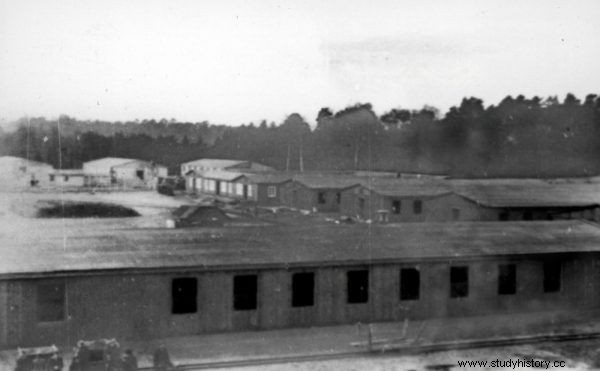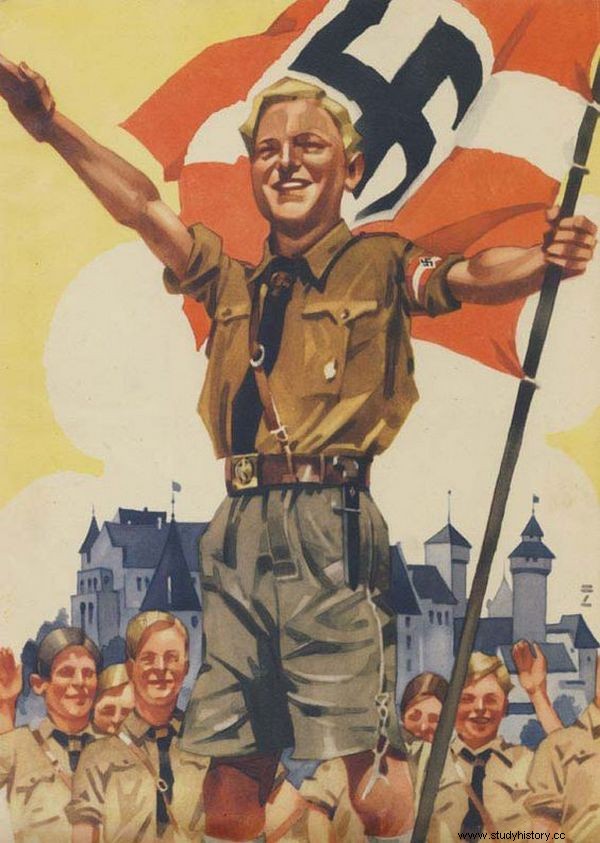They were separated from their families, kept in inhumane conditions. For thousands of German and Polish children, the war nightmare did not end in 1945. That's when it really started.
In concentration camps created by the communist authorities, intended for forcibly displaced people, children constituted almost a quarter of all detainees. The largest group of prisoners under the age of 15 was in Potulice in 1945-1950.
A former Nazi camp was adapted there for the needs of the Ministry of Public Security, which supervised the operation. The presence of the young people was received with dissatisfaction:the Polish staff described it in a letter to their superiors as an essential matter that largely hinders the sanitary and medical work in the camp.
It has been reported that nearly a thousand minors are imprisoned in the camp without their mothers. However, it was not the result of the war, but ... the policy of the new authorities. 10- or 11-year-olds were often arrested in the absence of their parents and hastily sent to a camp. It happened that children with a family, who survived the whole war helping in the field and carrying water from the well, suddenly disappeared.

In the post-German camp in Potulice in 1945-1950, more than half of the inmates were children under 15! The photo shows the construction of the German Resettlement Center camp in Potulice (source:public domain).
For Odra or to an orphanage
Large groups of several-year-old prisoners outside Potulice were also kept in Świętochłowice, Zimne Wody and Łambinowice, among others. However, they were an unnecessary burden for the Stalinist authorities. Why? First of all, they needed much more milk, fat and sugar than adults to survive. Besides, they were basically unsuitable for heavy physical work, which a healthy and efficient part of the displaced was forced to perform in some camps.
The creators of the system could get rid of the "problem" of children in two ways:either by sending them to Germany or simply by placing them in Polish orphanages. As the first solution would force the authorities to take responsibility for finding the parents of their young charges, the latter was chosen. The more so as the country was full of orphanages just after the war. The Ministry of Public Security only had to arrange transport, which was not much of a challenge.
German children began to go to Polish shelters en masse. Some of them never found out about their German origins and lived the life of ordinary inhabitants of the People's Republic of Poland. If the passport policy of the People's Republic of Poland allowed it, it was mainly the elderly who remembered the war that decided to go to their homeland.
Hunger, frost and disease
However, only the survivors could make the decision to return. Meanwhile, a large part of the tens of thousands of young people who were placed in camps supervised by the Ministry of Public Security never left them. Not only was it hungry there, but there was also a lack of hygiene and medicine. Diseases developed rapidly. Dangerous for children - almost 100% fatal! - especially typhus and dysentery.
Those who, thanks to their innate immunity, somehow did not fall ill, faced other dangers:the threat of freezing and… violence from the overseers. Fourteen-year-old Dorota Boreczek, in 1945, kept in the Zgoda camp in Świętochłowice, recalls in the book Mała Zbrodnia. Polish concentration camps ":
And I remember a lady who showed me a heart. Her name was Ruth, I don't remember her name. She had a blanket. She saw that I was shaking, she says:come to me. I jumped in. What was it like? It's warm. She hugged me still and we slept like that. And in the morning the heat began to fade away. As if someone turned off the power. When I was sure he was dead ... you know what my first thought was? I'll have a blanket! Own.

Fourteen-year-old Dorota Boreczek was sent to the Zgoda camp in Świętochłowice in 1945, where she witnessed monstrous scenes. The photo shows the camp gate. Photo from the book "Mała zbrodnia" (Znak Horyzont 2017).
And when I felt warmth from the barrack where they raped, I stopped. And I started calculating. Someone from the crew was standing in the open door, he was watching, he was not interested and I am not surprised at all, I was fourteen, looked ten, weighed less than 40 kilograms.
I'm not German!
It was possible to get to the camp by accident, straight from the street. This is how Eric von Carlsen, a fourteen-year-old Dutch boy, found himself in the Consensus in Świętochłowice. He moved to Poland with his parents and merchants before the war. The soldiers of the Polish army stopped him… for his Aryan appearance .
They had no doubts - blond, blue eyes, spoke Polish poorly. He must be German! Eric tried to explain to them - unfortunately in German - that this was a misunderstanding, and he came from a country that the Germans had also attacked. But no translation was successful.
The young Dutchman was smart, he had an eye for the holes under the fence and for the drunkenness of the guards. One day he managed to get out of the camp. Unfortunately, after escaping, he sought refuge in his home in Gliwice. The camp crew found him the same day.

The Dutchman Eric von Carlsen was unlucky, he looked like from a Nazi propaganda poster. It was enough to get it to Consent (source:public domain).
After being brought to the camp, he was severely punished. He was locked in barracks 7, where only Germans suspected of real activities for the Nazis were sent. Dorota Boreczek saw Carlsen beating with her own eyes:
They walked into the five guys, pulled Carlsen off and started threshing until bones crash. He broke away and ran to the highest bunk. He annoyed them because when drunk they could not climb. They couldn't reach him. Eventually, once they got him, they would be back on the ground. Then he reportedly screamed "shoot me." Well, they didn't listen, they pounded until it stopped moving. And when he came to himself, when he grew and became stale, the first thing he did - he ran away again. They brought him back and broke him.
Carlsen tried to escape four times. Each time the camp crew managed to catch him and punish him. When he finally returned to Poland, he passed away fairly quickly. He never regained fitness with multiple broken legs and arms.
Agent Piotr
The tragedies of children from displaced families were used for their own purposes by… the PRL intelligence service. This was the case of Piotr Heinz, a blonde with blue eyes, who was in one of the camps. Years later, he managed to return to his homeland. He met his mother in 1975 in West Berlin. They fell into each other's arms. It seemed to be the end of a long and painful separation ...

The shocking truth about post-war communist concentration camps can be found in Marek Łuszczyna's book "Mała zbrodnia" (Znak Horyzont 2017).
Happy end? This is how the story of Piotr, a German child from the security service camp, was presented by German filmmakers. The problem is, Peter was not the man he said he was! In fact, he was… a spy well-trained by the PRL intelligence service, recruited from among the children of former residents of Lower Silesia. The return to the country and the employment of Piotr in one of the West German institutions was a plan of a spy operation. He was exposed and sent back to Poland only in the late 1970s.
According to the Germans, hundreds of people were transferred to their country after the war. The purpose of these agents was not entirely clear. The apparent intention was to infiltrate Germany's less important state institutions on a mass scale. In fact, however, the authorities of communist Poland, cooperating with the Stasi, counted on the creativity of their charges. They dreamed of brilliant careers that would allow them to locate themselves next to the sources of more important information.
